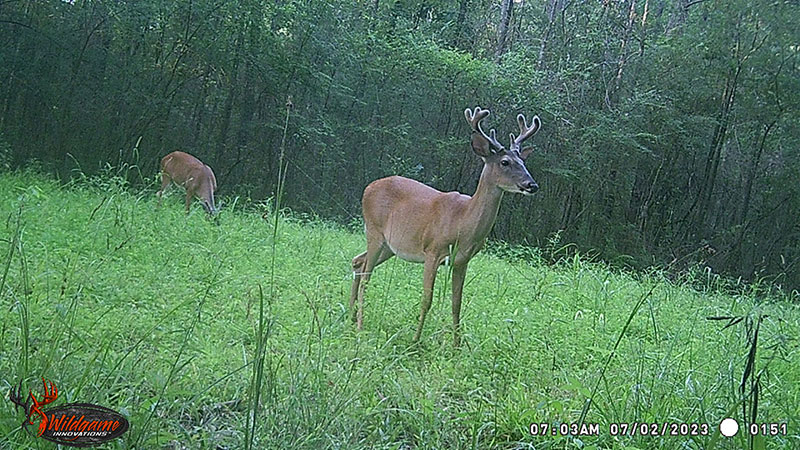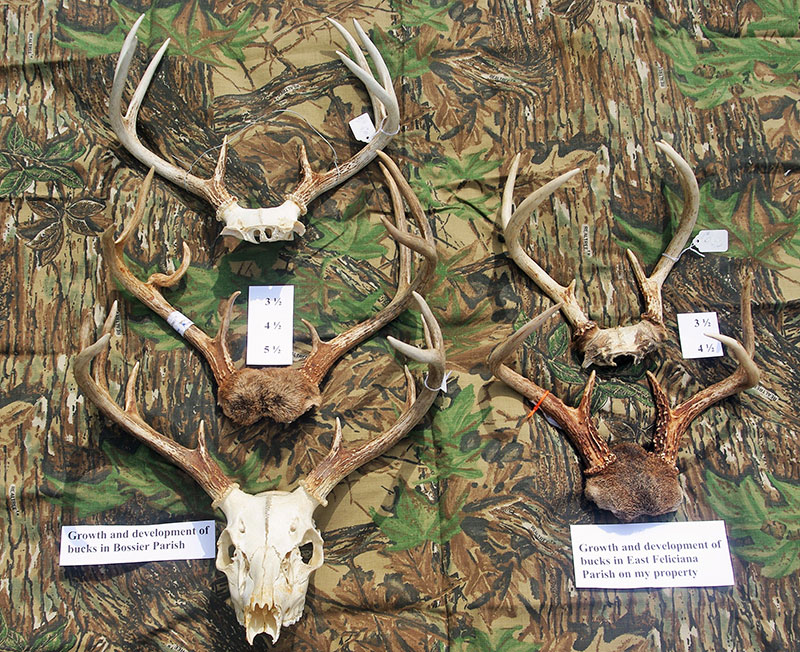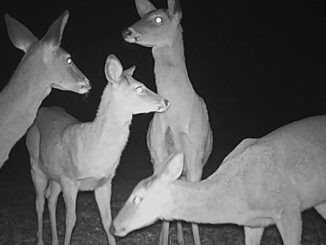
In the 1980s, major changes occurred in the world of deer hunting. The quest for trophy bucks began in a big way and hunters wanted to see themselves, not on the cover of Rolling Stone, but on the Big Buck Monthly magazines! Prior to this, most hunters were happy to kill a buck, but now with the big buck craze, it needed to be a true wall hanger.
The idea of bucks-only hunting was waning with the advent of DMAP and other doe tag programs in Louisiana and across the southeast. The cry of don’t shoot does was changed to don’t shoot small bucks; let em go and let em grow became the new mantra! And, in 1985, changes in the Farm Bill had an impact on the landscape in the fields and woods of Louisiana.
True trophy bucks, those that qualify for Boone and Crockett Recognition (160+) represent less than 1% of the buck population in a herd, yet this is the segment getting all the attention. Clubs and landowners managing wild deer herds for B&C shooters won’t be killing many bucks. A new No. 2 Typical buck for Iowa was just killed last season, but it took 30 years to break this record!
The McMurray buck, Louisiana’s largest non-typical buck was killed in 1994, almost 30 years ago. The highest scoring Louisiana typical buck killed in recent years was killed in 1998, 25 years ago. Records are made to be broken, but it often takes a while.
On average
On the average, most Louisiana adult bucks score between 100 and 120 on the B&C scale. These are good quality bucks but not the true trophies many hunters are seeking. As the pursuit for big bucks began, hunters began letting the younger and smaller racked bucks go with the idea they would grow older and become trophies. This has worked to a certain degree here and in the southeast. There are now more 3 ½ and older bucks being killed than ever before. DMAP and other doe harvest programs allowed hunters to shift the harvest from the buck segment to the doe segment and keep meat in the freezer. While the age factor is important, it takes more than age to grow a trophy buck. Nutrition is the key, and changes in the landscape across Louisiana has reduced the nutritional potential of many habitats.

The 1985 Farm Bill reduced crop production in many parishes; for example in West Feliciana farmers were growing corn, sweet potatoes, soy beans and winter wheat but suddenly they stopped farming and fields were either left idle or planted in pine. Pine was predicted to be the money tree for landowners and the planting of superior loblolly pines became the norm.
A good hardwood market allowed landowners to cut the hardwoods and these sites were replaced with pine plantings. The use of herbicides to control the hardwood regeneration and reduce the competition with the growing pines became the norm. This was happening in the mixed pine/hardwood forests around the state. Pine plantations were everywhere and this had a dramatic impact on the deer habitat. While it was recommended to allow hardwoods to grow along the creek and stream beds, the benefits from this were marginal.
Food plots
Hunters who hunted the oak mast now began feeding and growing food plots to help with the deer harvest. These activities, while beneficial, can never replace what Mother Nature produced on a large scale. The quest for the magic seed bullet began and over the years we have seen products come and go that boast about their value for growing trophy bucks. To really have an impact on a deer herd, planting and feeding must be done year round and on a large scale across the landscape, somewhat like a farmer growing forage crops. This is exactly why the farming parishes along the Mississippi River produce the largest bucks.
Now that CWD has been found in the state, another problem has been added to the equation of growing big bucks. The older adult deer are the ones that begin to show the symptoms of the disease, which means these infected deer have been on the landscape for several years spreading the disease. The idea of letting bucks get older is probably not a good management plan for a herd infected with CWD.
There is nothing wrong with shooting an adult buck that only scores 100 B&C points. The fact is, this is probably the best it will ever be and passing it up does not make a whole lot of sense. Yes, you probably would not mount the buck, but you had to have done some good hunting to get yourself in position to harvest the animal.To me, that speaks a lot about the success of the hunt rather than the score of the rack. But today, I hear more talk from hunters about passing up average racks because they think the deer is going to be a true wall hanger one day. The key to this idea is understanding the growth and development of the herd, something most hunters don’t consider.
Keep records
I suggest you look at the state reports produced by LDWF and see what the data says about your habitat type in your parish. Not keeping records? If you really want to manage your deer you need to be keeping data and documenting the body and antler growth of your deer. A habitat survey will tell you what potential your landscape has. LDWF can assist with all of this.
If you find that your herd is average compared to the state averages, then be happy. If you are able to step up the habitat management work and increase the nutrition on your property, then do so. The herd that I hunt in East Feliciana Parish is below average. Buck growth and antler development is probably a year behind the state average. But that is okay; I’m realistic, and fully understand I cannot do much to improve this.
I have made a serious effort to increase the oak component on our property, but the drought this year seems to be having an impact on them. Oh well, if I can outwit a 3 or 4-year-old buck this season it will be a success.
Good hunting to all of you, be safe and share your success with others.

